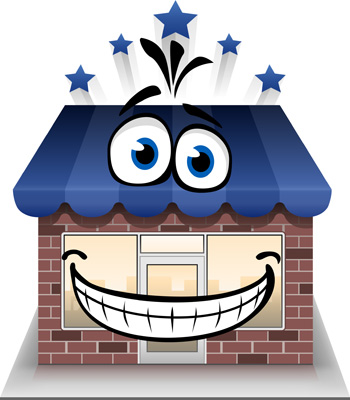 Standing out from every other local body shop is a difficult process.
Standing out from every other local body shop is a difficult process.
When I travel, one of my hosts often says that I just “have to see” so-and-so’s shop because of how cool it is. Those visits lead to tours of some pretty thoughtfully designed collision repair facilities. Without exception, these shops look really good from the street, the parking lot and the office.
Looks Are Everything
Many years ago, I was conducting an informal customer survey about choosing a body shop for a BodyShop Business story. At the same time, a Louisiana college was doing a similar survey. Not surprisingly, both of our results mimicked those that every insurance company has identified as a key part of Mrs. Smith’s repair facility choice: a squeaky clean presentation. Every survey ever done about collision repair indicates that the consumer is favorably impressed by a clean facility and a welcoming attitude. I’m at a loss to explain why, if clean is so important, that many body shops aren’t.
Physical presentation is the required first step in a profitable close rate. If your shop’s appearance from the street doesn’t look at least as professional as your competitor’s shop, Mr. and Mrs. Smith will drive right on by, even if their insurance company directed them there. Never forget that their vehicle is their second most valuable asset, and unless you look like you’ll take good care of their car, they’ll try the super clean-looking guy they drove by to get to the suggested but unkempt DRP shop. The signs, the lawn, the parking lot and the window glass all send a message to anyone driving by. Mrs. Smith only has a collision every seven years, so she has lots of time in between to drive by lots of local body shops. She’ll remember the shipshape ones.
Attitude Change
Other vital consumer preferences that collision repair marketing studies agree are important include a prompt reception, a welcoming attitude and a sympathetic ear. And they mean every time, every shopper, not just when nothing else is going on.
I watch it happen frequently, even at the sparkling clean shops I’m privileged to visit. The receptionist and estimator are upbeat and welcoming to the first Mrs. Smith in the door each day. As she heads off for the shop’s attractive, well-lit waiting area for some hot or cold beverages, the phone rings, and rings again and again just as the next few Smiths drive in for some help. One by one, the prompt recognition (“I’ll be with you shortly, please enjoy a fresh coffee”) becomes ignoring everyone except the rambling caller on the telephone. The friendly attitudes and pleasant smiles turn into harried scowls as each new customer seems to indicate more workload for the staff; clearly, they’re missing the point that more work is the objective.
Finally, the salesperson’s sympathetic ear transforms from a patient recipient of a vivid description of every moment of Mrs. Smith’s once-every-seven-years collision to an “Uh huh, uh huh, sit over there.”
Sign of the Times
So you say your shop meets all my listed criteria so far? Congrats! It takes a lot of work to maintain a shiny, clean building, parking lot and office every day. But how will I choose among your shop and all the other clean and friendly good guys?
Signage sends an important message (pun intended). Easy-to-read, colorful and professional signs go a long way toward solidifying a desirable experience for the Smiths. From the turn-in off the street, signs should clearly point the way Mrs. Smith should proceed. Legible signs should likewise direct where she should park her car, which one is the correct front door and where she should go now. While I see many top shops with great signage outside, I seldom see any with great signage inside.
While Mrs. Smith waits for her estimate, rather than have her thumb through old magazines or watch a scary video of someone’s badly wrecked car getting pulled out on your frame machine, tell her exactly why she should choose your shop on a big wall sign. On a large, easy-to-read-from-across-the-room, professionally done sign, tell the Smiths why you’re great. My ideal sign would feature your colorful logo along with a one-sentence quote from the ownership promising to do a superior job. The sign would also bullet point all the swell things about your shop: technician training, latest equipment, insurance relationships, years in business, lifetime warranty, etc.
Having seen this done several times in very cool shops across the country, I’m convinced it’s a powerful closing tool. Mrs. Smith is already in your waiting room; in addition to a warm welcome, a clean place to sit and fresh beverages and snacks, take the opportunity while she’s captive to clearly list in writing all the reasons she should choose you. She’ll read it – I promise.
In addition to the inside signs telling your story, you could reiterate the same strengths on a handout sheet that you could staple to the Smiths’ estimate – in the unlikely event they forgot some of your wonderful qualities. Far too many shops don’t close well. They write a complete sheet, smile when the Smiths arrive and thank them for the chance to bid the repair of their vehicle. Top shops ask for the sale every time, in no uncertain terms. Like what? Like, “Mrs. Smith, we would like to repair your car, and our trained techs, state-of-the-art equipment and stellar local reputation will make the process seamless for you. May I schedule your car for repair?” Good closers ask for the work in plain English, every time. The worst that can happen is she says no. If she says why not, it’s your chance to overcome her objections.
Closing the Deal
Among the many statistics in the Industry Profile in the May 2013 issue of BodyShop Business was close rate, also called capture ratio or batting average. It’s the percentage of estimates written that turn into repair orders. The formula is simple: number of ROs divided by number of estimates for a set time period. According to the shops that responded to the Industry Profile survey, the average close rate is 62 percent. The survey also indicated that the average shop fixes 13 vehicles each week. A 62 percent close rate means they wrote 21 estimates to get those 13 jobs. That means that eight customers stood in the waiting room, shook hands with the estimator each week and had their car fixed somewhere else. Eight lost jobs per week, 49 work weeks a year and an average RO of $2,238 per the survey means that $877,296 of work walked out of the average shop.
Could your shop use another three-quarters of a million dollars in work? Shops ask me all the time where I think they should advertise, but until their close rate is in the 80 percent range, I say don’t advertise for more work. Just clean up, smile, explain clearly and close the work that’s already finding your shop.
Mark R. Clark is the owner of Professional PBE Systems in Waterloo, Iowa; he is a well-known industry speaker and consultant. He is celebrating his 25th year as a contributing editor to BodyShop Business.













